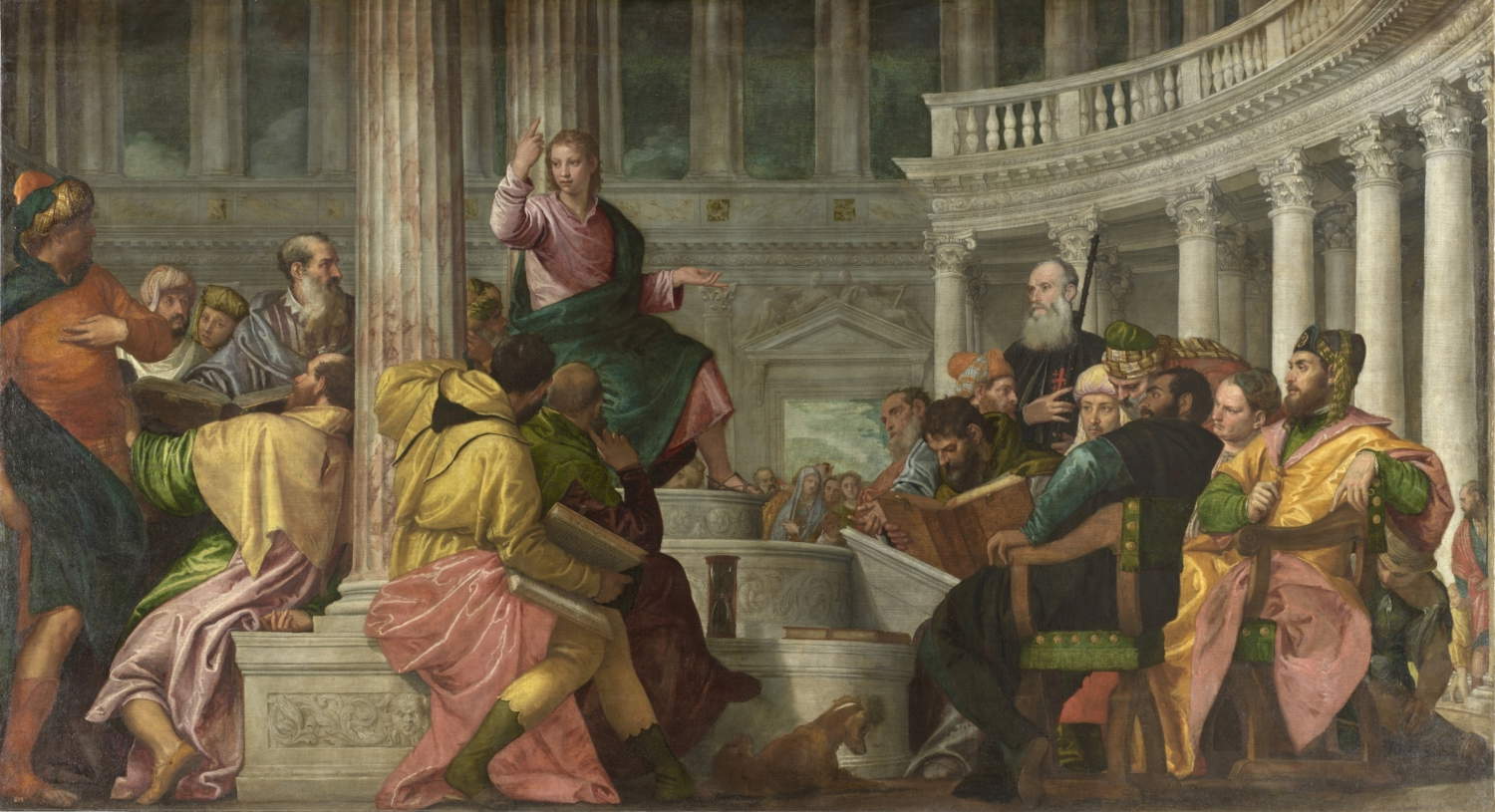From May 27 to September 21, 2025, the Museo del Prado, in collaboration with Fundación AXA, presents the first major monographic exhibition in Spain dedicated to Paolo Veronese, one of the most celebrated protagonists of the Venetian Renaissance. Curated by Miguel Falomir, director of the Madrid museum, and Enrico Maria dal Pozzolo, professor at the University of Verona, the exhibition Paolo Veronese (1528-1588) aims to investigate the extraordinary artistic skill of the painter, who was capable of giving life to a unique formal universe. The artist conceived painting as a language rich in cultural and stylistic references, which he expressed with great creative freedom.
Veronese operated in a critical period for Venice, characterized by religious tensions and the first signs of economic and political decline. With his talent, the artist skillfully masked these anxieties, helping to consolidate the “myth of Venice,” an image that still fascinates today. As is the case with the great masters, Veronese knew how to transcend his time: the beauty and elegance of his compositions enchanted collectors and painters for centuries, from Philip IV and Louis XIV to Rubens, Velázquez, Delacroix and Cézanne.
The exhibition explores these and other themes through more than 100 works from prestigious international institutions, including the Musée du Louvre, the Metropolitan Museum of Art in New York, the National Gallery in London, the Uffizi Galleries in Florence, and the Kunsthistorisches Museum in Vienna. These works dialogue with the cornerstones of the Prado’s permanent collection.
With this monograph, the Prado completes a major program of research, restoration and exhibitions begun more than two decades ago and dedicated to Venetian Renaissance painting, a mainstay of the former Spanish royal collection and the current museum. It also represents the latest stage in a journey that began with exhibitions devoted to Bassano in Siglo de Oro Spain (2001), Titian (2003), Tintoretto (2007), and Lorenzo Lotto (2018), offering a comprehensive survey of Venetian Renaissance painting.

The exhibition is divided into six sections, which alternate between chronological and thematic order. The first, From Verona to Venice, recounts the artist’s training in his hometown of Verona, where his Roman heritage coexisted with the influence of Venetian masters (particularly Titian) and central Italian artists such as Raphael and Parmigianino. Veronese soon developed a personal style, marked by formal and compositional elegance and chromatic richness, which enabled him to establish himself in Venice from 1551. The second section, Majestic Theater. Architecture and Scenography, delves into Veronese’s conception of space and visual narrative, where he fused the Venetian pictorial tradition with the architectural and theatrical innovations of Palladio and Daniele Barbaro, confronting the approach of Tintoretto and the scenographic ideas of Serlio. Special attention is paid to the famous Dinners, sumptuous manifestations of the refinement and culture of the Venetian patriciate.
The third section, Creative Process. Invention and Repetition, explores Veronese’s ability to lead one of the most prolific studios of the time through meticulous control of the creative process and a skillful division of tasks, in which drawing played a key role. The fourth section, Allegory and Mythology, reveals his mastery in the creation of allegories and mythological scenes, themes particularly prized by the elites of the time, which enabled him to rival the prestige of Titian, earning him his powerful clientele in and outside Venice. The fifth section, The Late Veronese, analyzes the last phase of his career, characterized by unstable compositions, a darker palette, and an evocative and symbolic use of light, in which the landscape becomes the protagonist. These transformations, which prefigure Baroque painting, responded to aesthetic reasons (the influence of Tintoretto and Jacopo Bassano) and to changes in context, such as the religious climate following the Council of Trent. The last section, Haeredes Pauli and Veronese’s Admirers, focuses on the artist’s legacy: on the one hand, members of his family, who for years continued to mechanically reproduce his models under the name “Haeredes Pauli”; on the other, talented painters who absorbed and spread his style, including El Greco, the Carraccis, and Pieter Paul Rubens. His legacy continued into the 20th century, influencing artists such as Velázquez, Tiepolo, Delacroix, and Cézanne. The exhibition concludes by recalling Veronese’s central role in European collecting, which ensured his privileged presence in the Prado’s collections.
The exhibition thus offers the public an opportunity to delve into the work of one of the most brilliant masters of the European Renaissance, fundamental to understanding the artistic taste of the elites of the time and the fundamental impact of his painting on the Spanish Siglo de Oro.

 |
| At the Prado Museum the first major monographic exhibition in Spain dedicated to Paolo Veronese, with more than 100 works |
Warning: the translation into English of the original Italian article was created using automatic tools. We undertake to review all articles, but we do not guarantee the total absence of inaccuracies in the translation due to the program. You can find the original by clicking on the ITA button. If you find any mistake,please contact us.